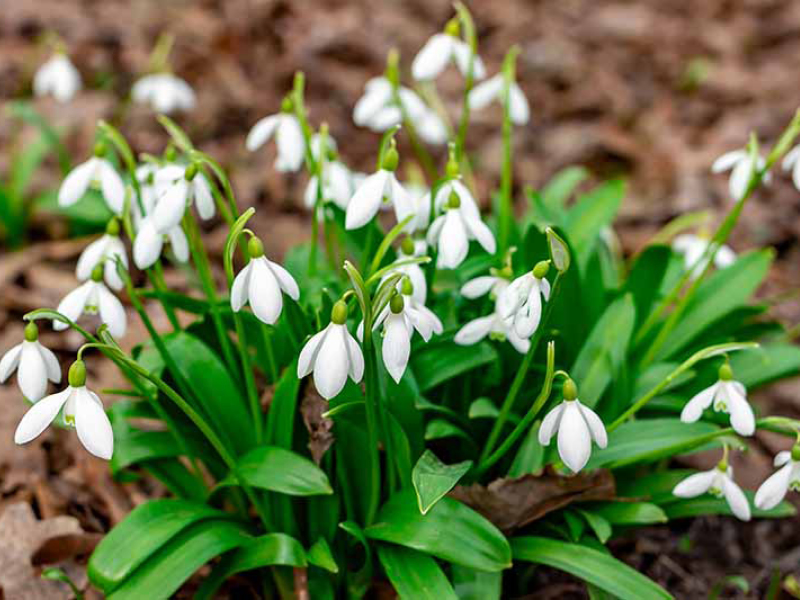IN PRAISE OF SNOWDROPS
By the time you read this article, you will have almost certainly seen and admired your first garden snowdrop of the year. In local parklands and woodlands, many come into flower at the end of January, and in these dark days the snowdrop brings much needed delight. They are wonderful heralds of a long-awaited spring, just around the corner.
Valued garden flowers, yes – but are they ever found growing here in the wild? The true origin of UK snowdrops is unknown, and they were not found here in the wild until 1770 in the counties of Worcestershire and Gloucestershire.
In Europe, they are found in upland damp woodlands and meadows up to 1600 metres, but they are not found in the far north, Iceland or the Faroe Islands.

February Fairmaidens
Here, snowdrop legends abound, as do a host of country names including “February Fairmaidens” and “Candlemas Bells”, reflecting the fact that they were closely linked with the Christian festival of Candlemas on 2nd February. They were grown in church grounds and used to decorate the interiors of holy buildings.
In Yorkshire, village maidens, to show purity, would wear bunches of snowdrops around their waists. I have yet to see this in Little Paxton!
Wiltshire remains Britain’s top snowdrop county, but snowdrop days and festivals are still held in many areas of England. For a real snowdrop experience this February, try to visit the National Trust gardens at Anglesey Abbey at Lode, near Cambridge, which are home to the UK’s National Collection of snowdrops. It’s a wonderful day out!
So, enjoy the wonderful “February Fairmaidens” in gardens and woodlands in the next few weeks.


